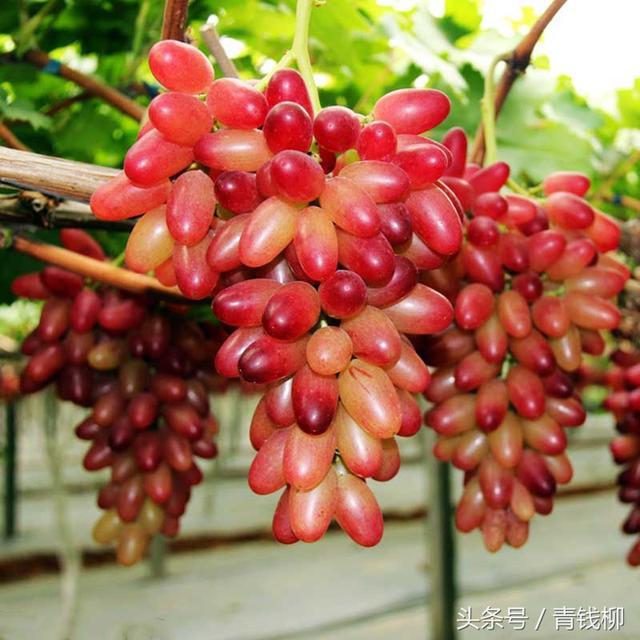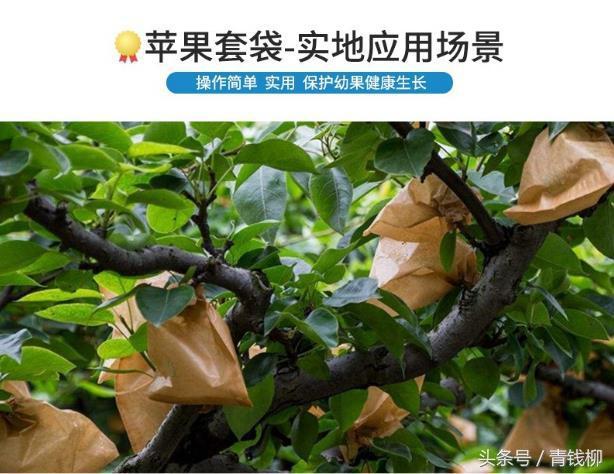Characteristics and High-quality and High-yield cultivation techniques of Meizhi Grape in Zhuji City

Characteristics and High-quality and High-yield cultivation techniques of Meizhi Grape in Zhuji City
Beauty refers to Eurasian grape, originating in Japan, which was bred by the cross between Unicom and BaladiNO.2 in 1988 by Shiyuan Grape Research Institute of Japan. The variety has strong sprouting ability, vigorous growth, large ear, high fruit setting rate and good color, but the late maturity of branches is obvious. under the condition of improper cultivation and management, the flower bud differentiation of this variety is not much and the yield is unstable. Zhuji City has achieved success after more than ten years of cultivation, experiment and demonstration.
1 Variety characteristics
1.1 Botanical characteristics
The main shoot is very upright and the Internode is long. Tender shoots yellowish green, with fuchsia, glossy. The leaves are small, palm-shaped and medium-large when mature. Lobed or moderately 5-lobed, heart-shaped serrated. The front and back of the leaves are smooth and without villi. The petiole is depressed and arched. Bisexual flowers.
1.2 ear characteristics
The ear of this variety is medium and large, and there is no accessory spike. The general ear weight is 450-600 g, and the maximum ear weight is 1 750 g. The fruit is large and slender, with an average grain weight of 10g and a maximum grain weight of 20g. The front end of the fruit is bright red, and the color at the base of the fruit is slightly light, just like the fingers of a beautiful woman stained with nail polish, which is extremely gorgeous, hence the name. The fruit powder is thick, the pericarp is thin but tough, the fruit is not easy to crack, the pulp is hard and brittle, it can be cut into slices with a knife without dripping. The fruit is translucent, high sweetness, no sour taste, soluble solids up to 16%-19%. Cultivated in the south, the taste is delicious and crisp, with a typical Eurasian grape flavor. This variety integrates appearance, taste and nutrition, and has excellent quality.
1.3 Tree potential characteristics
The tree potential of this variety is strong, the annual seedlings can grow to more than 5 m by the end of autumn, and the root base thickness can be more than 3 cm. The mature period is relatively late, it sprouts at the beginning of April in this city, and it takes about 135 days for the fruit to fully mature. The general year begins to color in early August and matures from late August to early September. The ripening period requires a certain accumulated temperature. The disease resistance is weak and it is susceptible to white rot. The mature period of branches is late, the differentiation of flower buds is difficult, the differentiation of the upper and middle ends of branches is better, and the winter buds are easy to germinate in autumn.
1.4 Flower bud differentiation and yield performance
Beauty refers to the difficulty of flower bud differentiation, the early differentiation of flower bud is easy to degenerate, the improper management of fertilizer and water is easy to germinate in autumn and winter bud, and the yield is low. Generally, the yield per mu is only about 300 kg. In view of the characteristics of beauty finger and the cultivation requirements of pollution-free commercial fruit, Zhuji City broke through the difficult problems of flower bud differentiation and control of main diseases and insect pests by tackling key technical problems, and summed up a set of "through one-year cultivation and management, to achieve two-year tree potential, pollution-free and standardized cultivation techniques for high yield in the second year". According to this set of techniques, the yield per mu can reach more than 1000 kg in the second year and stabilize at about 1500 kg per mu from the third year.
2 main cultivation techniques
Planting beauty means to achieve significant economic benefits, the main cultivation measures and strategies should achieve the following two points: first, according to the botanical and cultivation characteristics of beauty finger, we should control the tree potential, promote flower bud differentiation and lay the foundation for high yield; second, around the production of pollution-free fresh fruit, do a good job in the comprehensive prevention and control of major diseases and insect pests to achieve high quality and high yield.
2.1 Application of protected cultivation
In order to control diseases and produce pollution-free table grapes, protected cultivation must be promoted. Facility cultivation can be divided into two forms: single-ridge small arch greenhouse rain shelter facilities and double-ridge greenhouse rain shelter facilities. There are two kinds of materials used in facility cultivation: galvanized steel pipe and bamboo.
The suitable width of ridge is 2.5m ~ 3.0m. For cultivation with ridge width of 2.5 m, galvanized steel pipe was used as material with an interval of 4 m along the ridge direction, and bamboo was used as a material with an interval of 3.6 m along the ridge direction. The roof height of the rain shelter facility with single ridge and small arch shed is 2.3 m, and the arm height is 1.8 m. The roof height of the double-ridge greenhouse is 3.0 m, and the arm height is 1.7 m. Pay attention to the construction of the shed should be firm in case of typhoon.
2.2 choose a suitable rack type
Beauty refers to the exuberant growth, it is appropriate to choose to ease the growth of the frame. Scaffolding and vertical scaffolding can be used. According to the local experience of Zhuji City, it is appropriate to adopt the improved "double cross V-shaped frame", which can not only ease the growth potential, but also ensure high yield in the second year. On the basis of the original "double cross V-shaped frame", it is required to increase the "V-shaped" width, in which the apparent width of the V-shaped ridge is 1.25 to 1.75 m at 1.7 m from the ground, 1.0 m at 1.4 m from the ground, and 0.3 m at 1.0 m from the ground.
2.3 reasonable planting density
For moderately growing grape varieties, the "double cross V frame" is generally used to plant 185 to 250 plants per mu in the south, but because the beauty refers to the strong growth of the varieties, it is generally appropriate to plant 120 to 150 plants per mu. The suitable width of ridge is 2.7 m, one plant is planted in the middle of each ridge, and the interval of each plant is 1.5 ~ 2.0 m.
2.4 planting requirements
It is recommended to plant after defoliation in winter or in early spring. Paddy field planting should be shallow rather than deep. On the basis of root pruning and root disinfection, the root system should be planted in the shape of an umbrella. After planting, the root should be watered with water with more harvest, and then an eyedropper should be installed on the ridge. Then agricultural film mulching was used to promote growth, and when the plant grew up in June, the black and white plastic film was used to increase the luminosity, moisturize and inhibit the growth of weeds.
2.5 promote the regulation of temperature and humidity in the cultivation greenhouse
Close the shed door day and night before sprouting, and increase the greenhouse temperature and ground temperature day and night. The temperature is generally controlled at about 30 ℃, and the highest temperature is not more than 35 ℃. When the greenhouse temperature reaches 30 ℃, the greenhouse door should be opened in time to control the temperature and keep the soil moist; from sprouting to a week before flowering, the lowest temperature in the greenhouse should be no less than 5 ℃. Before and after flowering, the daytime temperature was controlled at 25 ℃ ~ 30 ℃, and the lowest temperature was above 14 ℃. The border surface is covered with two-color reflective film to control temperature and reduce humidity.
2.6 controlling nitrogen fertilizer and increasing phosphorus and potassium
Strictly control the application amount of nitrogen fertilizer, in principle, the application amount of nitrogen fertilizer is only about half of that of Fujiminori grapes, and the proportion of phosphorus and potassium fertilizer is increased by more than 30%. Nitrogen fertilizer should be applied sooner rather than later, winter fertilizer should be applied in autumn, sprouting fertilizer should be less applied, extra-root topdressing should be paid attention to, usually once or twice a month, foliar fertilizers such as green Fenwei, love harvest and so on should be used.
2.7 sprout pruning
The amount of branches left should be sparse. Take the improved "double cross V-shaped frame" as an example, generally leaving a branch at about 25 cm to keep the shelf surface ventilated and transparent. In the same year, when the seedling grew to 0.9 m, the shoot leaves grew to 8-9 leaves and began to be coring, and then 3 leaves were left to pick the heart again and again. Results: the number of pruning and leaves of the tree was pruned in the mode of "7-4-4" leaves, and the first pruning should be carried out 15-18 days before flowering. There are 15 leaves on one main tip. Treatment of secondary shoots: the secondary shoots below the inflorescence were completely erased every 7 days after the first cutting, 4 secondary shoots were left above the inflorescence, coring after 2-3 leaves, and other secondary shoots were completely erased in batches. There are 812 leaves in a main shoot and a total of 23,27 leaves in the main shoot. The new shoots on the top are repeatedly coring to promote flower bud differentiation, prevent flower bud degeneration and accelerate branch ripening. Leave the branches with short internodes and full bud eyes during winter pruning, and leave more fruiting mother branches for medium-long shoot pruning.
2.8 Integrated control of diseases and insect pests
The prevention and control of diseases and insect pests adopts the policy of "prevention first and comprehensive control", which is based on agricultural control and focuses on killing pathogens. The comprehensive control measures of cleaning the garden carefully in winter, eradicating pathogens in the cashmere stage, bagging in time and symptomatic spraying during the growing period were adopted. The main diseases are black pox, gray mildew, white rot, anthrax, downy mildew and so on. Insect pests include wing moths, longicorn beetles, beetles, aphids and so on. Choose pollution-free pesticides such as Dasheng, DuPont Fuxing, Sukeling, Shijiale, DuPont Wanxing, Topzine, imidacloprid, cypermethrin, aphid lice net and other pollution-free pesticides, the principles of alternate and reasonable mixed use should be grasped.
- Prev

Mobile short video content KAA live video how to make money?
Mobile short video content KAA live video how to make money? In the new media era, the network technology is constantly optimized and the hardware facilities are constantly updated. In the new media environment, the ways and forms of communication are constantly changing.
- Next

Key points of apple bagging technology
Apple bagging technology points Every year from late May to early June, fruit farmers will bag apples to protect the fruit surface clean, prevent fruit rust, avoid pests biting the flesh, and reduce pesticide residues in apples. 1 bagging time bagging since morning...
Related
- Wuhan Hospital Iron Tree Blooming Result Was Instantly Frightened by the Gardener Master
- Which variety of camellia is the most fragrant and best? Which one do you like best?
- What is the small blue coat, the breeding methods and matters needing attention of the succulent plant
- Dormancy time and maintenance management of succulent plants during dormancy
- Minas succulent how to raise, Minas succulent plant pictures
- What are the varieties of winter succulent plants
- How to raise succulent plants in twelve rolls? let's take a look at some experience of breeding twelve rolls.
- Attention should be paid to water control for succulent plants during dormant period (winter and summer)
- Watering experience of twelve rolls of succulent plants
- Techniques for fertilizing succulent plants. An article will let you know how to fertilize succulent plants.

